
Yonia Fain (1913-2013):
September 3-December 16, 2024 | Emily Lowe Gallery


Yonia Fain (1913-2013):
September 3-December 16, 2024 | Emily Lowe Gallery
Winston Churchill’s words from his 1948 speech to the British House of Commons, “Those who fail to learn from history are doomed to repeat it,”i resonate now more than ever. As Churchill was reflecting on the ravages of World War II, decimated cities across war-torn Europe, and the unfathomable loss of life from 1939 to 1945, his thoughts are a valuable reminder as the world once again becomes increasingly divided.
The exhibition Yonia Fain (1913-2013): Tracing History serves as a vehicle of transpor t to the darkness of the Holocaus t and introduces us to a remarkable story of survival. Yonia Fain’s artwork and poetry record his family’s escape from Russia during the Bolshevik Revolution, his time in Poland during the Nazi invasion of 1939, his passage through Siberia to Japan, and to the Shanghai Ghetto in China. Through his drawings and paintings, the exhibition follows his footsteps to Mexico after the war, where friends encouraged him to make his way to Brooklyn, New York, and ultimately to Hempstead, New York, and Hofstra University, where his archive and legacy are preserved by the Museum. His life was one of constant reinvention with each relocation, and his conviction to endure was captured by brush and pen. Creating became the light that sustained him.
Yonia Fain’s artwork offers a vision of the power of the human spirit and the desire to find hope where none may seem to exist. His journey speaks to those who are displaced, pushed to the margins, stripped of identity, and forced to conform. Lest we forget that past events are not just stories we read about with a sense of detachment but a history shared by living, breathing human beings who can help us better understand those whose lives may trace a similar path of hardship today.
Special thank s to Jan Burzlaff, whose expertise in Holocaus t studies weaves together, through his essay, Fain’s creative process and historical events of the early 20th century. Gratitude is also extended to Snowdon Parlette for not only loaning an original Fain painting to the exhibition, which was gifted to him by the artist, but also for providing personal accounts of their friendship. Together, their contributions allow the viewer to better understand Fain’s work and his place in history.
Alexandra (Sasha) Giordano Director
Hofstra University Museum of Art
Jon. “Histor y and the Future of Our Past.” Word & World 42.3 (2022)
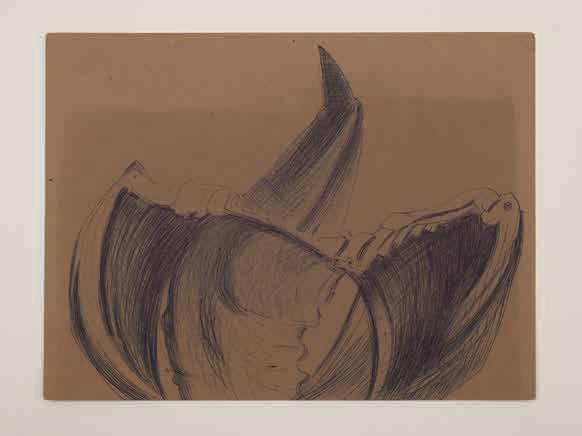
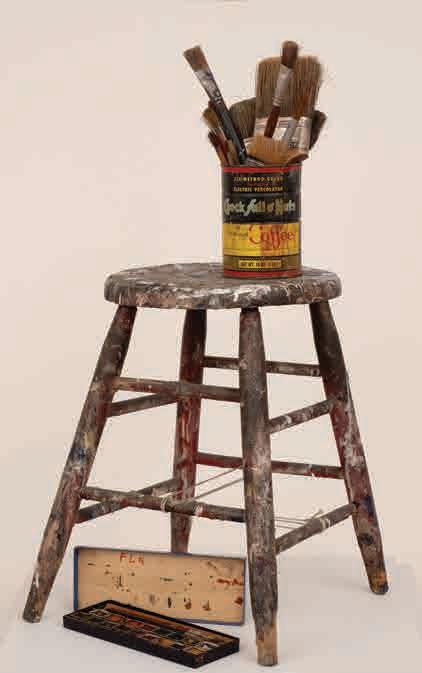
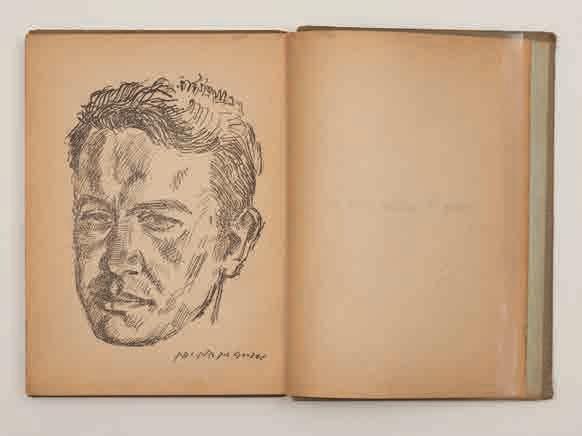
Museums have long valued oral histor y for filling gaps in written records, preserving firsthand experiences, and enhancing research. The Hofstra University Museum of Art’s collection of Yonia Fain’s artwork, literary works, and personal ephemera offers a comprehensive view of his life and global influence as an educator. Biography is central to his story as an artist. By uncovering and integrating new discoveries into the exhibition, including oral history, we now have a more robust understanding of his narrative and evolution as an artist and mentor.
Yonia Fain taught at The Universit y of Mexico from 1947 to 1953 an d taught Yiddish literature at the local Jewish Teacher s Seminary 1 In addition to painting an d exhibiting his wor k in the New Yor k gallerie s of the day, Fain taught painting at the Brookly n Museum Ar t School from 195 4 to 1970 , an d at New Yor k Universit y from 196 4 to 1970 He later joine d Hofstr a Universit y in the Department of Fine Ar t an d Humanities , where he taught ar t histor y an d the philosophy of ar t for over a decade
Snowdon Parlette was a student majoring in art history at Hofstra University. He was 23 years old when he met Yonia Fain in 1970. He later became Fain’s apprentice and studio assistant. He described Yonia Fain as “an extraordinary educator, not only did he have an encyclopedic knowledge of art history, but sometimes in class when he was illustrating some painter, he would take colored paints and chalk and write on the blackboard and just create this masterpiece ...” 2 Parlette and Fain bonded over early 20th-century Russian painters and Dmitri Shostakovich’s music. Since both men lived in Brooklyn, Parlette began driving Fain to Hofstra, which allowed them more time to talk and to build a lasting friendship. Fain shared many stories of his life and the hardships he experienced, reflecting on both his artistic and philosophical sensibilities. As ar t historians and intellectuals, the t wo would take walk s on Madison Avenue, which was then a prominent destination for art enthusiasts, where they would wander into galleries to discuss art.
Fain had a successful career, as both an internationally recognized artist and Yiddish poet. His work has been included in exhibitions at the Jewish Club in Shanghai (1942), Palacio de Las Bellas Artes in Mexico City (1948), Carnegie Institute (1952), Whitney Museum of American Art (1957, 1959, 1963), United States Holocaust Memorial Museum (2000), and others. Despite Fain’s success, Parlette spoke of his friend as someone who preferred the private life of an artist in America over the hustle of the contemporary art world.
One memorable stor y describes their time in Fain’s Brookly n studio, where they painted together Parlette recalled, “Yonia would distinguish his works into two different classes of paintings. He painted what he called his ‘hard paintings,’ which were difficult to look at, sometimes really disturbing works … while others were joyous, flowing, and beautiful … Yonia would say to patrons who had chosen a hard painting, ‘You may have trouble living with this painting, it’s difficult to wake up every morning and look at this … and if you do have trouble living with it, you can bring it back and exchange it.’” 3
Parlette has generously loaned a painting to this exhibition. The piece, titled Z, is based on the film by the same name directed by Greek expatriate Costa-Gavras in 1969. The painting portrays a scene from the film depicting a crowd marching during a revolution, with vibrant, colorful flags waving. The painting captures the spirit of resistance and activism that permeates the film, reflecting Greece’s political turmoil and social unrest during that time. Parlette came into possession of this painting because (as a lighting designer) he provided lighting assistance to Fain for his upstate New York studio. Fain was extremely grateful and allowed Parlette to select any painting he desired from the studio.
Fain’s teachings, paintings, drawings, and poems seek to honor the many who perished and were unable to inspire or teach future generations Yonia Fain’s legac y remains a vital source of hope, demonstrating the enduring power of resilience and creativity in the face of adversity.
Kristen Dorata
Assistant Director of Exhibitions and Collections
Hofstra University Museum of Art
1 Zucker, Sheva. “Remembering Emeritus Professor Yonia Fain Z”L.” Mameloshn, 6 Jan. 2014, mameloshn.org/2014/01/06/remembering-emeritus-professoryonia-fain-zl/.
2 Oral histor y interview with Snowdon Parlette, 2024
3 Ibid

Checklist
Yonia Fain
(American, born Russia [now Ukraine], 1913-2013)
A force, not a face from Job, The Great Believer series, 1970-1975
Ink and watercolor on paper
13.25 x 19.75 in
Hofstra Universit y Museum of Ar t Gift of the Estate of Yonia Fain HU2017.36
Yonia Fain
(American, born Russia [now Ukraine], 1913-2013)
Aggressive Bird, 1941-194 6
Ink on paper
18.125 x 23.375 in
Hofstra Universit y Museum of Ar t Gift of the Estate of Yonia Fain HU2016.13
Yonia Fain
(American, born Russia [now Ukraine], 1913-2013)
Conversation, 1941-194 6 Ink on paper
16.75 x 23.75 in
Hofstra Universit y Museum of Ar t Gift of the Estate of Yonia Fain HU2016. 8
1 Yonia Fain
(American, born Russia [now Ukraine], 1913-2013)
Holocaus t, no date Oil on linen
79.5 x 132.25 in.
Hofstra University Museum of Art Gift of the artist HU2012.10, © Yonia Fain

2 Yonia Fain
(American, born Russia [now Ukraine], 1913-2013)
Janek Goldstein, 1941-194 6
Graphite on paper
11.375 x 9.75 in
Hofstra Universit y Museum of Ar t
Gift of the Estate of Yonia Fain
HU2016.11, © Yonia Fain
Yonia Fain
(American, born Russia [now Ukraine], 1913-2013)
Job and the people from Job, The Great Believer series, 1970-1975
Ink and watercolor on paper
13 x 19.875 in
Hofstra Universit y Museum of Ar t Gift of the Estate of Yonia Fain HU2017.42
3 Yonia Fain
(American, born Russia [now Ukraine], 1913-2013)
Not My Child, 1941-194 6
Ink on paper
15 x 11.5 in.
Hofstra University Museum of Art Gift of the Estate of Yonia Fain HU2016.18, © Yonia Fain
4 Yonia Fain
(American, born Russia [now Ukraine], 1913-2013)
Occupied City, 2008
Mixed media on paper
21.125 x 33.125 in.
Hofstra University Museum of Art
Gift of the artist HU2012.41, © Yonia Fain
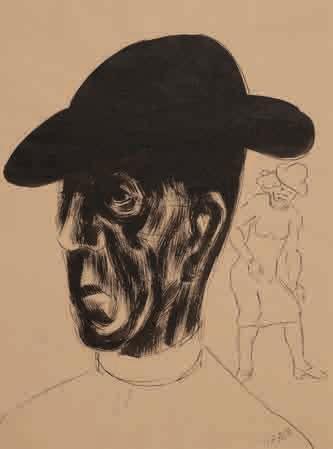

Yonia Fain
(American, born Russia [now Ukraine], 1913-2013)
Untitled, c. 1945-1955
Oil on board
21.75 x 16 in
Hofstra Universit y Museum of Ar t Gift of the Estate of Yonia Fain HU2015.49
5 Yonia Fain
(American, born Russia [now Ukraine], 1913-2013)
Rage, 1941-194 6 Ink on paper, 24 x 17.75 in.
Hofstra University Museum of Art
Gift of the Estate of Yonia Fain HU2016.9, © Yonia Fain
Yonia Fain
(American, born Russia [now Ukraine], 1913-2013)
Semek Kushner, 1941-194 6 Graphite on paper
11.375 x 9.75 in
Hofstra Universit y Museum of Ar t Gift of the Estate of Yonia Fain HU2016.12
6 Yonia Fain
(American, born Russia [now Ukraine], 1913-2013)
Storm, no date
Oil on canvas
48 x 96 in.
Hofstra University Museum of Art Gift of the artist HU2012.19, © Yonia Fain
7 Yonia Fain
(American, born Russia [now Ukraine], 1913-2013)
Studio with Two Portraits, no date
Oil on canvas
80 x 104 in.
Hofstra University Museum of Art Gift of the artist
HU2012.20, © Yonia Fain
Yonia Fain
(American, born Russia [now Ukraine], 1913-2013)
The Devil and Job from Job, The Great Believer series, 1970-1975
Ink and watercolor on paper
13.125 x 19.5 in
Hofstra Universit y Museum of Ar t Gift of the Estate of Yonia Fain HU2017.3 0
8 Yonia Fain
(American, born Russia [now Ukraine], 1913-2013)
The Devil and Job from Job, The Great Believer series, 1970-1975 Ink and watercolor on paper 13 x 19.375 in.
Hofstra University Museum of Art Gift of the Estate of Yonia Fain HU2017.29, © Yonia Fain
9 Yonia Fain
(American, born Russia [now Ukraine], 1913-2013) The Scream, 1962 Oil on canvas
48 x 35 in.
Hofstra University Museum of Art Gift of the artist HU2012.15, © Yonia Fain
10 Yonia Fain
(American, born Russia [now Ukraine], 1913-2013)
There Was a City, 2008
Mixed media on paper 21.25 x 33 in.
Hofstra University Museum of Art Gift of the artist
HU2012.42, © Yonia Fain

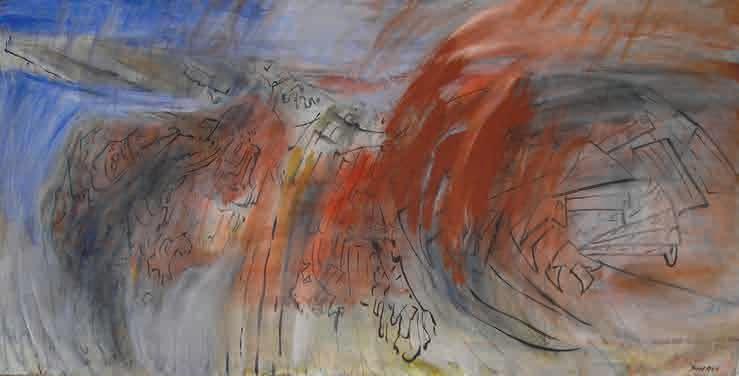
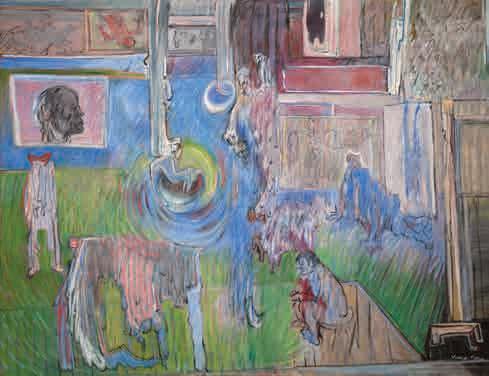
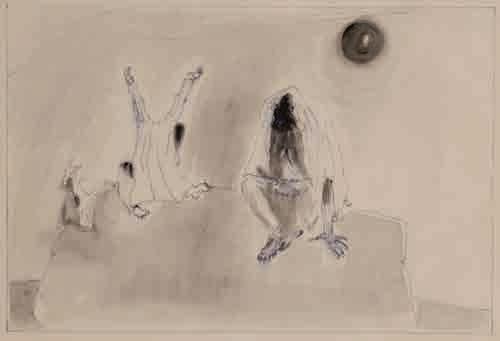
11
Yonia Fain
(American, born Russia [now Ukraine], 1913-2013)
Trouble Moving Into Harmony and Light from Job, The Great Believer series, 1970-1975 Ink and watercolor on paper 13 x 19.875 in.
Hofstra University Museum of Art Gift of the Estate of Yonia Fain HU2017.20, © Yonia Fain
Yonia Fain
(American, born Russia [now Ukraine], 1913-2013)
Trouble Moving into Harmony and Light from Job, The Great Believer series, 1970-1975 Ink and watercolor on paper 13 x 19.375 in
Hofstra Universit y Museum of Ar t Gift of the Estate of Yonia Fain HU2017. 22
Yonia Fain
(American, born Russia [now Ukraine], 1913-2013)
Untitled from The Ghetto
Remembered: Par t I series, 198 0 Ink on paper
8.5 x 18 in
Hofstra Universit y Museum of Ar t Gift of the Estate of Yonia Fain HU2018.18
Yonia Fain
(American, born Russia [now Ukraine], 1913-2013)
Untitled from The Ghetto
Remembered: Par t I series, 198 0 Ink and pastel on paper 16 x 21.5 in
Hofstra Universit y Museum of Ar t Gift of the Estate of Yonia Fain HU2018.9
Yonia Fain
(American, born Russia [now Ukraine], 1913-2013)
Untitled (Bird), no date
Ink on paper
9.5 x 6.5 in
Hofstra Universit y Museum of Ar t
Gift of the Estate of Yonia Fain HU2018.28
Yonia Fain
(American, born Russia [now Ukraine], 1913-2013)
Untitled (Rooster), 2003
Ink on paper
8.75 x 7.875 in
Hofstra Universit y Museum of Ar t
Gift of the Estate of Yonia Fain HU2018.27
Yonia Fain
(American, born Russia [now Ukraine], 1913-2013)
Untitled, no date
Ink on paper
10.5 x 5.5 in
Hofstra Universit y Museum of Ar t
Gift of the Estate of Yonia Fain HU2018.3 0
Yonia Fain
(American, born Russia [now Ukraine], 1913-2013)
Untitled, no date
Ink on paper
8.5 x 9.75 in
Hofstra Universit y Museum of Ar t
Gift of the Estate of Yonia Fain
HU2018.31
12 Yonia Fain
(American, born Russia [now Ukraine], 1913-2013)
Untitled, no date
Ink on paper
8.5 x 11 in.
Hofstra University Museum of Art
Gift of the Estate of Yonia Fain
HU2024.15, © Yonia Fain
13 Yonia Fain
(American, born Russia [now Ukraine], 1913-2013)
Untitled, no date
Ink on paper
9 x 12 in
Hofstra University Museum of Ar t Gift of the Estate of Yonia Fain HU2024.16 , © Yonia Fain
Yonia Fain
(American, born Russia [now Ukraine], 1913-2013)
Untitled, no date
Marker on paper 8.5 x 7 in
Hofstra University Museum of Ar t Gift of the Estate of Yonia Fain HU2024.17
Yonia Fain
(American, born Russia [now Ukraine], 1913-2013)
Untitled, no date
Ink on paper 11 x 8 in
Hofstra University Museum of Ar t Gift of the Estate of Yonia Fain HU2024.18
Yonia Fain
(American, born Russia [now Ukraine], 1913-2013)
Untitled, no date
Ink on paper
10.4375 x 7.1875 in
Hofstra University Museum of Ar t Gift of the Estate of Yonia Fain HU2024.19
Yonia Fain
(American, born Russia [now Ukraine], 1913-2013)
Untitled (Mexico sketchbook ) 1947-1953
Ink on paper 9 x 12 in
Hofstra University Museum of Ar t Gift of the Estate of Yonia Fain HU2024. 20
Yonia Fain
(American, born Russia [now Ukraine], 1913-2013)
Untitled, no date
Ink on paper
8.5 x 8.5 in Hofstra University Museum of Ar t Gift of the Estate of Yonia Fain HU2024.21
Yonia Fain
(American, born Russia [now Ukraine], 1913-2013)
Untitled, no date Ink on paper
5.125 x 8.5 in
Hofstra University Museum of Ar t Gift of the Estate of Yonia Fain HU2024.22
Yonia Fain
(American, born Russia [now Ukraine], 1913-2013)
Untitled, no date
Ink on paper 8.5 x 4 in
Hofstra University Museum of Ar t Gift of the Estate of Yonia Fain HU2024.23
Yonia Fain
(American, born Russia [now Ukraine], 1913-2013)
Untitled, no date
Ink on paper
8.5 x 3.75 in
Gift of the Estate of Yonia Fain HU2024. 24
Yonia Fain
(American, born Russia [now Ukraine], 1913-2013)
Untitled, no date
Ink on paper 11 x 8 in.
Gift of the Estate of Yonia Fain HU2024.25
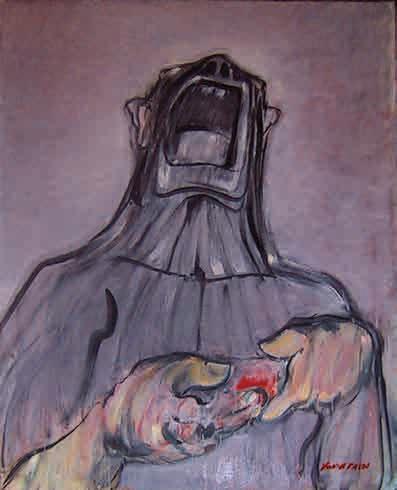
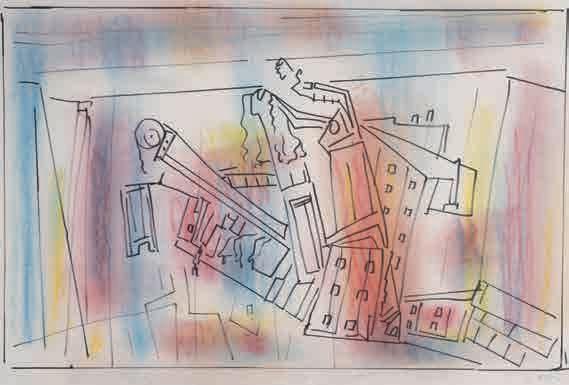
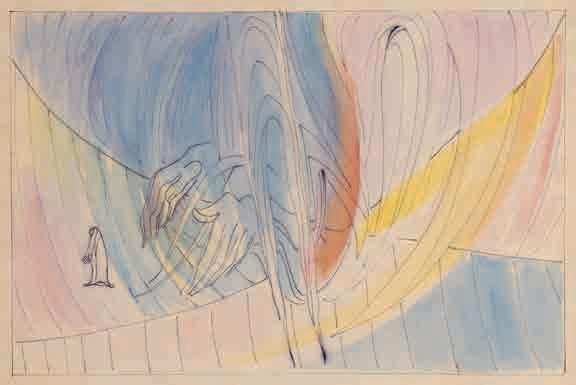

Yonia Fain
(American, born Russia [now Ukraine], 1913-2013)
Untitled, no date
Marker on paper
5 x 8 in
Gift of the Estate of Yonia Fain HU2024.26
Yonia Fain
(American, born Russia [now Ukraine], 1913-2013)
Untitled, no date
Ink on paper 6 x 9.35 in Gift of the Estate of Yonia Fain
HU2024.27
Ephemera:
Yonia Fain
(American, born Russia [now Ukraine], 1913-2013) Z, 1970 Oil on canvas 51 x 41 in Courtesy of Snowdon Parlette
Diego Rivera (Mexican, 1886-1957 )
Untitled (Seated Man and Woman), 1950 s
Pencil on paper
3.625 x 5.25 in Hofstra Universit y Museum of Ar t Gift of Mr. Louis Shorenstein HU90.10
Typewritten letter from Yonia Fain to Diego Rivera (Carta mescanoescrita de Yonia Fain a Diego Rivera), June 1950 Facsimile
8.5 x 11 in FONDO DOCUMENTAL DIEGO RIVER A CENIDIAP/INBAL
Isaac Soyer (Russian, 1902-1981)
Scrub Woman, 194 0 Charcoal on paper 16 x 17 in Hofstra University Museum of Ar t Gift of Dr. Alfred Brotman HU74.16
Rufino Tamayo (Mexican, 1899-1991)
Affiche Avant Lettre, 1969
Lithograph
33.375 x 24.25 in Hofstra University Museum of Ar t Gift of William D. Levine HU78.91
Yonia Fain, Paintings and Drawings catalog with essay by Dr. Robert Myron, Hofstra University Library Gallery, Hempstead, NY February 17-March 23, 1974, 7 x 7 in., collection of Hofstra University Museum of Art
Exposicion de Yonia Fain catalog with essay by Diego Rivera, 1948 Palacio de las Bellas Artes, Salon Verde, Mexico City, Mexico, 8.375 x 5.5 in., collection of Hofstra University Museum of Art
1952 Pittsburgh International Exhibition of Contemporary Painting catalog, Carnegie Institute, Yonia Fain: Night Café, New York, 1952, 8 x 6 in., collection of Hofstra University Museum of Art
1957 Annual Exhibition: Sculpture, Painti ngs, Watercolors catalog, November 20, 1957-January 12, 1958, Whitney Museum of American Art Yonia Fain included, 7 x 7 in., collection of Hofstra University Museum of Art
1959 Annual Exhibition of Contemporary American Painting catalog, December 9, 1959-January 31, 1960, Whitney Museum of American Art Yonia Fain included, 7 x 7 in., collection of Hofstra University Museum of Art
1963 Annual Exhibition: Contemporary American Painting catalog, December 11, 1963-February 2, 1964, Whitney Museum of American Art Yonia Fain included, 8.25 x 8.25 in., collection of Hofstra University Museum of Art
The Dance, photographed for John Heller Gallery by Alexandre Georges, n.d., photograph, 9.5 x 6 in., collection of Hofstra University Museum of Art
Dancers Before the Mirror, photographed for the Whitney Museum of American Art by Jeremiah W. Russell, 1957, photograph, 9.5 x 8 in. collection of Hofstra University Museum of Art
14 Artist’s Stool, Paint, and Paintbrushes, 1952, wood, metal, twine, acrylic, watercolor, and nylon, 13.5 x 13 x 27.75 in., collection of Hofstra University Museum of Art, © Yonia Fain
15 A tlie unter di shtern (A Gallows Under the Stars), Mexico, 1947, ink on bound paper, 8 x 5.75 in., collection of Hofstra University Museum of Art © Yonia Fain
Yonia Fain April 20 to May 8, John Heller Gallery, included in catalog is statement by Rufino Tamayo about Yonia Fain, n.d., ink on paper 6 x 9 in., collection of Hofstra University Museum of Art
Arrival, poem by Yonia Fain, n.d., 8.5 x 11 in., collection of Hofstra University Museum of Art
Firsthand experience is key to understanding Yonia Fain’s prolific artistic oeuvre, from his early drawings in prewar Warsaw to the many paintings in New York after 1953 “To paint is to share the experience,” he reflected in a testimony given to the United States Holocaus t Memorial Museum (USHMM) in June 1999 1 His work seek s to lend voice to all Jews who experienced Nazi rule, the vas t majorit y of whom did not leave a trace “So I painted, and I felt that I didn’t reach a point in which I could say it expressed not only vision, but also experience. In other words, as the great English poet s say, the eye is a window, but you have to see what’s behind the window.”2 The exhibition Yonia Fain (1913-2013): Tracing History allows for precisely such a window into historical experience In the process, because his creations do not fit neatly into the t wo dominant categories of abstrac t or realist representations, they also invite a much-needed reevaluation of Holocaust and postwar art
Born in Tsaris t Russia in 1913, Fain arrived in Vilnius (then Poland) at age 11; his family had fled from the Bolsheviks, who had taken over the country In many ways, his upbringing in interwar Poland was typical, characterized by uprootedness, growing attachment to the multiethnic nation, and state-sponsored discrimination, which in turn reinforced the feelings of Jewishness. The 26-year-old had been working as an artis t when the Nazis invaded Poland in September 1939 He, therefore, expected to be mobilized at this time But , he said, “I never got the card from the army because Warsaw was bombarded The cit y started to get up in flames.” His landlady urged him and his first wife to run eastward, where “the little towns on our way were burning and the people left them.” 3 These experiences would occupy a central place in his drawings, as depicted in Occupied City and There Was A City He ended up in Minsk , a cit y that the Soviet s claimed for themselves after the Nazi-Soviet pac t in 1939 In order to continue to function as an artist , he had to pass an official exam and become a state-approved painter of Soviet realism He did so reluctantly Both his pas t membership in the Jewish Labor Bund and his refusal to accept Soviet citizenship led him to come into the crosshairs of the Soviet authorities; soon enough, he was denounced. Trying to evade the imminent threat , Fain relied on prewar connections, including a friend who now worked for the secret police Days before the onset of Operation Barbaross a on June 22, 1941 – the Nazi invasion of the Soviet Union – and the subsequent mass shootings, he and his firs t wife managed to obtain t wo transit visas from the Japanese honorar y consul Chiune Sugihara. Traveling through Russia to Kobe, Japan, the couple was then transferred to the Ghetto in Shanghai His parent s stayed behind in Nazi-occupied Vilnius, where they were murdered and buried in a mass grave outside the city 4
It was in Shanghai that Fain found his life purpose, marked by his experiences “A s a painter, how could I survive emotionally? That was more important than even physically So, I got some money and went to a store to buy paint and paper.”5 In this sense, the portrait s and drawings in the exhibition, such as Rage, attes t to more than the necessit y to make a living The use of thick brushstrokes and Chinese ink enabled him to shine a powerful light on the cruelties experienced by Jewish people. The horrific news of the mass destruction of entire Jewish communities in Europe instilled the overall confusion and loneliness that ever y refugee experienced “It was ver y clear that from now on, ar t is not going to be my profession, it’s going to be my life And I wanted to paint something that had to do not with a still life, not with a portrait , not with a sunset , not with rainbows, but with the struggle of man to live, to exist, to build, and to hope.”6
Fain’s works in Shanghai invite us to enlarge the traditional boundaries of “Holocaust art,” which is usually defined as an estimated 100,00 0 paintings, drawings, sculptures, and object s created between 1933 and 1945, of which only 30,00 0 remain 7 Like Fain’s Shanghai works, for example, Portrait of Janek Goldstein, a quarter of what has survived comprises portrait s and self-portraits A s much as wartime diaries, visual ar t aims to leave a trace A s Fain’s portrait s show, surviving – physically, emotionally, and financially – also occurred far removed from Nazi territory. After all, “painting is sharing of your experience without any superimposed answers. ”8 Visibly, the lived experience thus captured on the margins must be added to the canon of Holocaust art
Once the war was over, Fain and his first wife moved to Mexico, a choice that had much to do with the muralist Diego Rivera “I decided that since I don’t want to be a private painter, a portrait painter, a painter that decorates a wall in a private home, I want to paint history, I must go to Mexico.”9 His largest creation, a 600-square-foot mural depicting the Warsaw Ghetto Uprising, stems from this intense period It was also at that time that Fain published his first volume of Yiddish poetr y in 1947, A tlie unter di shtern (A Gallows Under the Stars). In these endeavors, here too, personal experience guided Fain – not to simply illustrate past event s but, in his words, engage in “a more direct (...) conversation with events, with recognizable forms, and with historical rhythms.”10
1 Oral History Interview with Yonia Fain, United States Holocaust Memorial Museum (hencefort h Oral History), RG-50.494.0004, 1999, Part 3
2 Ibid
3 Oral History, Part 1
4 Oral History, Part 1
5 Oral History, Part 1
6 Oral History, Part 2
7 “Art,” in Walter Laqueur and Judith Tydor Baumel, eds., The Holocaust Encyclopedia (New Haven, CT, 2001), 26-32, 29
8 Oral History, Part 3
9 Oral History, Part 3
10 Oral History, Part 3
Fain’s paintings thus open a vist a into the lived experience of those who endured Nazi violence, whether they lived to see the end of the war or they did not. By the time Fain arrived in New York Cit y and joined the facult y of the Department of Fine Ar t and Humanities at Hofstra Universit y (early 1970s-1985), capturing the lived experience of the Holocaus t had morphed into the “fundamental subtex t of life,” as fellow survivor and literar y critic Michał Głowiński (1934-2023) aptly described such lifelong commitments 11 The exhibition leaves little doubt that Fain’s primar y goal was not to endow the Holocaus t with some form of meaning, as so many have tried to do, but instead to show patterns of experience to those born outside Europe and those who, unlike Fain, did not witness the war. The Storm, for instance, embodies this constant effor t to halt the violence and delay a fatal moment , to lift each scene up to what he dubs “ a level of timelessness.”12 Unlike many strands of autobiographical Holocaus t literature and testimony up to the 1990s, his creations continually highlight the sheer impac t of the war, ravaging body and soul
At the same time, and this is another particularity compared to other survivor-artists such as Karol Konieczny and Jozef Szajna, Fain eschews direct depictions of violence and instead resorts to powerful dialectics of hope and despair, betrayal and empathy, voice and silence, or emptiness and space. Fain’s work is never exclusively mnemonic, documentary, or abstract; it reconstructs reocurring moments during the war, whether it is a scene from a ghetto, The Ghetto Remembered, or a crowd of prisoners to be marched off to a pit. Like oral testimony, his art skillfully captures the feeling of being alive, these last moments before tragedy struck, however fleeting or doomed they may appear in hindsight. The Scream, one of his best-known paintings, must also be understood in this sense: it provides ever-momentary access to an inner life that is about to be destroyed. Scrutinizing paintings such as Holocaus t, with its expressive concentric lines, brush strokes, and vivid colors, one is reminded of what the Israeli novelist and fellow survivor Aharon Appelfeld (1932-2018) translated into prose: the value of individual perceptions, the fate of Jews in repressive Christian societies, and the erasure of the boundaries between dream and reality, and therefore the past and the present.
A s scholars have begun to explore victim perspectives systematically, this exhibition occurs at a key milestone With the las t generation passing away, we now face a world without survivors – another sobering reminder of how Holocaus t ar t in general, and the creations by victims and survivors in particular, was long considered ill-defined or an aesthetic curiosity, at best , or deliberately sidelined, at worst This long neglec t of victim perspectives also helps explain why Fain, despite a successful career even before he arrived in the United States, struggled to find well-deserved recognition in his new country Speaking from the vantage point of 1999, he made clear that this struggle, too, was “par t of the game And I decided this is an experience And if I am going to handle that experience, I will be all right .”13 However, perhaps precisely because Fain’s oeuvre bridges the war and the postwar period, it conveys a deep meaning for us today. Taken together, his work not only expands the boundaries of Holocaus t ar t – it invites us to seek out the prolific traces left if we only care to look close enough A s he put it , “I paint about the rhythms of histor y – uprisings, genesis. I don’t illustrate (…) But I paint the storm of history And if you ask me where are you, I’ll tell you. I’m in the eye of the storm as a painter.”14
Jan Burzlaff
Guest Essayist
Postdoctoral Associate in Holocaust Studies, Cornell University
11Michał Głowiński, “Czy w cieniu Zaglady?” in Myslenie po Zagladzie: Glosy z Polski, ed. Sebastian Rejak (Warsaw, 2008), 19-34, 19
12 Oral History, Part 3
13 Oral History, Part 3
14 Ibid
Cover image: Yonia Fain (American, born Russia [now Ukraine], 1913-2013), Untitled, c. 1945-1955, oil on board, 21.75 x 16 in Hofstra University Museum of Art, gift of the Estate of Yonia Fain, HU2015.49, © Yonia Fain
Long before Hofstra was founded, indeed before there was “Long Island,” the Indigenous peoples called this region Sewanhacky, Wamponomon, and Paumanake – sacred territory inhabited by the Carnarsie, Rockaway, Matinecock, Merricks, Massapequa, Nissequoge, Secatoag, Seatauket, Patchoag, Corchaug, Shinnecock, Manhasset, and Montauk. Each tribe had its own territory, whose boundaries were respected by the others, and all inhabitants were united in their shared desire for peace. The land that surrounds Hofstra is part of that history. We want to protect its legacy and honor the Indigenous peoples who have made untold contributions to our region.
